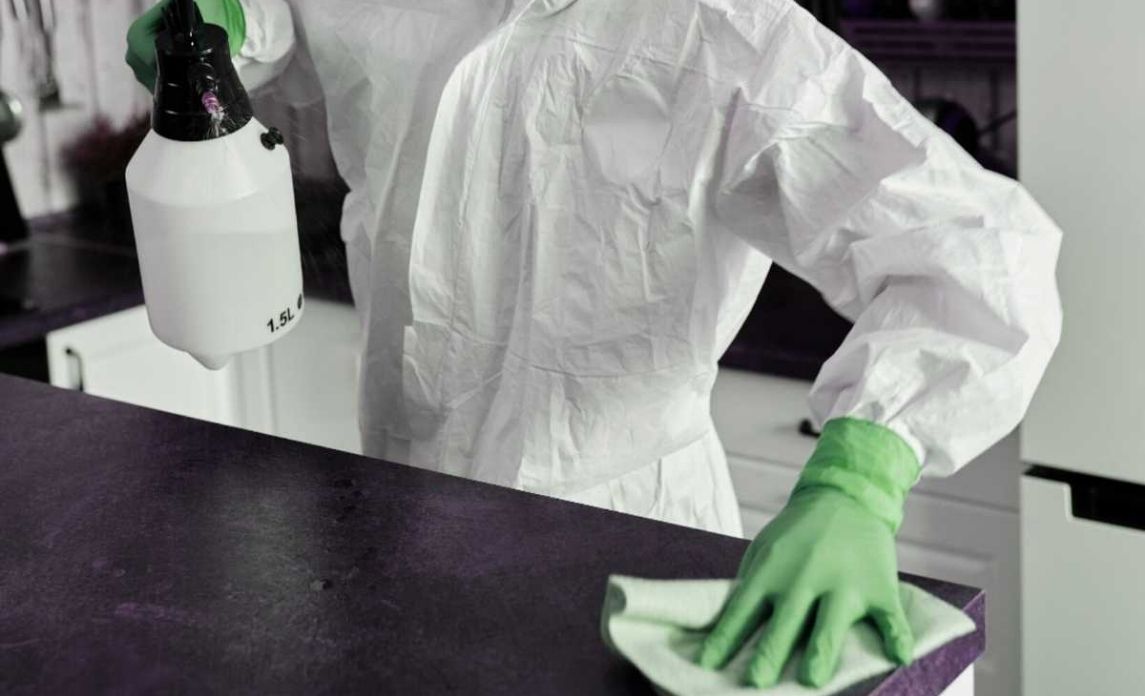Public health is a many-faceted branch of governance, concerned with protecting and improving the health of an entire community. It involves educating the public, conducting research, as well as making policies for disease prevention.
Cleaning is also a big part of public health. As the COVID-19 pandemic showed the modern world, cleanliness is still one of the best ways to prevent the spread of even the deadliest pathogens. The main concern is that not everyone is well-equipped to meet such high standards of cleaning. Establishments such as hotels, hospitals, schools, and restaurants require a different cleaning approach compared to homes.
Ideally, commercial cleaning companies should be brought in to perform the job. They not only have access to the right equipment but also know the best practices to ensure quality results. Professional cleaners also know the inherent difference between different cleaning methods and know which ones to apply in certain situations.
Disinfection vs Sterilisation vs Sanitisation
Cleaning, as defined, is the process of making something free of dirt and marks. This is commonly achieved through brushing, washing, or wiping. However, just because something is clean doesn’t mean that it is automatically free from viruses, bacteria, and other pathogens. This is where processes such as disinfection and sterilisation come in.
Disinfection is a cleaning method that makes use of chemicals to kill microorganisms like bacteria and viruses. Using soap and water is usually enough to remove a large number of such microorganisms and even inactivate them. However, there remains the risk of residual pathogens; there are also certain species that can survive after washing.
As such, disinfection is an extra step after regular cleaning to further minimize the number of microorganisms on an object. Disinfection is often performed on high-touch and shared surfaces, such as countertops, tables, light switches, doorknobs, elevator buttons, cabinet handles, and stair handrails.
Sterilisation, on the other hand, is essentially a stronger form of disinfection. It’s designed to eliminate, kill, or deactivate a wide range of microorganisms, including fungi and spores. Sterilisation can be achieved through the application of radiation or extreme heat, as well as through the use of high pressure, chemicals, or filters.
After undergoing sterilisation, an object is expected to harbour no live pathogens. Sterilisation is often performed in the food and health industries, as these involve products and tools that get ingested or inserted into the body.
Meanwhile, sanitisation can be achieved through the cleaning or disinfection of an object or surface. The process used is often immaterial, as long as the number of germs that remain on the object or surface is deemed acceptable or safe by public health standards.
Finally, decontamination is a process that removes contaminants, including hazardous substances like chemicals and radioactive materials. Its goal is to prevent the spread of substances that can cause not only infectious diseases but also damage to the environment. Decontamination is often applied in medical settings, food preparation, and forensics.
Creating a Cleaning Protocol
Cleaning for public health is not all about knowing when to use a certain method or a cleaning agent. It’s also about developing protocols that ensure the lowest possible risk of contamination. Having deep cleaning protocols in place also helps determine whether or not there need to be additional cleaning methods or improvements in procedures.
One of the most important elements of cleaning protocols include the frequency of cleaning. The schedule depends on various factors such as the prevalence of disease, although it should be noted that certain areas must be cleaned and at least disinfected daily. Such areas include bathrooms and kitchens.
As earlier mentioned, high-touch surfaces should be cleaned and disinfected more frequently. On the other hand, emergency and other essential vehicles should be cleaned and disinfected after every use.
Also covered in cleaning protocols are the actions taken by the personnel before, during, and after cleaning. This includes the proper usage of personal protective equipment or PPE, including gloves, eye protection, gas masks, and hazmat suits whenever necessary. For high-risk areas or during health emergencies, cleaning personnel are expected to wear full PPE.
Proper disposal is also critical, especially for cleaners who handle materials such as bodily fluids or noxious chemicals. Finally, cleaning protocols should also include the proper disinfection and/or sterilisation of reusable equipment.
Cleaning During a Pandemic
Separate cleaning protocols should also be developed during times of pandemics or if someone in the building or facility is sick with a contagious disease. Closing off the affected area is ideal, instead of shutting down operations; however, for highly transmissible diseases, closing down an establishment may be the best course of action.
Wet cleaning methods are preferred in these instances; dry methods such as sweeping or brushing can dislodge infectious particles into the air and increase the risk of transmission. Vacuuming using vacuums equipped with high-efficiency particulate air (HEPA) filters may also be necessary. Make sure to turn off fans and central HVAC systems that service the affected space to prevent the escape or spread of particles.
These additional protocols should not supersede routine cleaning and disinfection. Rather, they should act as a complement.
Final Thoughts
Cleanliness is a crucial component of public health. As such, stakeholders should pay attention to industry standards and scientific discoveries to continuously improve services and ensure the health and safety of the public.
Sources:
https://www.cdc.gov/coronavirus/2019-ncov/community/clean-disinfect/index.html


